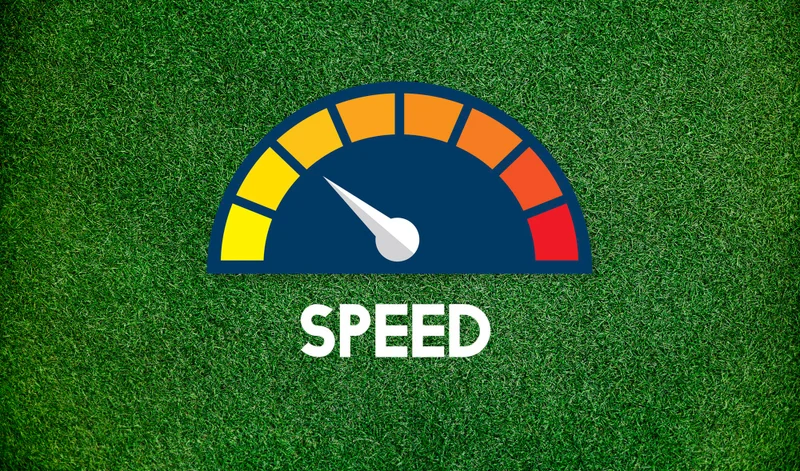Speed: Limits, Chasing, and High-Speed Escapes
Generated Title: High-Speed Folly: When Bureaucracy Hits the Brakes on Common Sense
The world's gone mad for speed – or so the marketing departments would have you believe. We're promised faster internet, faster deliveries, and now, a six-part docuseries on VICE TV dedicated to the adrenaline-fueled world of NHRA drag racing, "Chasing Speed," showcasing cars hitting 340 mph. Yet, somewhere in Slovakia, lawmakers are slamming on the brakes, literally, with a new law imposing a 6 km/h speed limit for cyclists, skaters, and scooter riders on pavements. The contrast is stark, and frankly, hilarious.
The Absurdity Index: Slovakia's Slow Roll
Let's unpack this 6 km/h limit. That's roughly 3.7 mph. A brisk walking pace is around 4 mph. So, Slovakia is essentially legislating that you can't even walk quickly on a scooter. The parliament claims this is about safety, citing pedestrian and cyclist accident statistics – 67 pedestrian deaths and 22 cyclist/scooter rider deaths last year. But here's the kicker: police don't record pavement accidents separately. The data simply doesn't exist to justify this specific measure. It's regulation based on feeling, not fact.
Dan Kollar, president of Cyklokoalicia, rightly calls the law "nonsensical." He points out the obvious: maintaining balance at such a low speed is difficult, even for children. (And, he adds, they routinely exceed it). This isn't about safety; it's about control, or perhaps, a profound misunderstanding of physics. I've looked at hundreds of policy decisions, and this one stands out for its sheer impracticality. Slow-vakia? Law setting speed limits for cyclists, skaters derided in Bratislava
The fine for exceeding this snail's pace is up to 100 euros ($116). How will this be enforced? Are we envisioning Slovakian police armed with radar guns, clocking toddlers on scooters? The interior ministry hasn't clarified the implementation details. Which leads to a more fundamental question: How much will it cost to enforce a law that's slower than walking?
The American Counterpoint: Speed as Spectacle
Meanwhile, across the Atlantic, VICE TV is gearing up to air "Chasing Speed," a docuseries celebrating the NHRA's 75th anniversary. We're talking about machines hurtling down a quarter-mile at speeds exceeding 340 mph. The series promises "high-stakes, adrenaline-fueled action." It's a celebration of human ingenuity pushing the boundaries of velocity.

The NHRA partnership makes sense for VICE TV. They’ve been expanding into live and unscripted sports, adding Professional Fighters League (PFL) and BKB Bare Knuckle Boxing to their roster. The network airs 200 hours of live event sports programming each year. Drag racing fits that mold.
But think about the cultural message here. In the US, speed is entertainment, a spectacle. In Slovakia, it's a threat to be legislated into near-immobility. It’s a tale of two continents, separated by vastly different risk tolerances. And it raises a key question: Why are we so drawn to speed in one context and so terrified of it in another?
One explanation might be control. In NHRA drag racing, speed is harnessed, contained within a highly regulated environment. The drivers are professionals, the cars are meticulously engineered, and the risks, while substantial, are understood and mitigated. On Slovakian pavements, the perception is that speed is chaotic, unpredictable, and therefore, dangerous. But is that fear justified by the data? Again, the data is missing.
The contrast reminds me of another high-speed chase – the one that ended at the US-Mexico border when Alyssa Wilson, fleeing police in a stolen minivan, hit 90 mph on the 118 freeway. Ultimately, the owner of the sober living home from which the van was stolen, Nicolle Walters, stated that she was more concerned for the driver's safety than the vehicle itself. That's a perspective that seems to be missing in Bratislava.
Bureaucratic Inertia
Slovakia's new law isn't just about speed; it's a symptom of a larger trend. Since Prime Minister Robert Fico took office in 2023, his government has passed a slew of legislative amendments, including changes to the constitution and the criminal code, drawing protests and accusations of curbing rights. The speed limit seems less about pavement safety and more about a general impulse to control and regulate. And this is the part of the report that I find genuinely puzzling: Are these laws a reflection of genuine public concern, or are they simply a demonstration of power?
So, What's the Real Story?
Slovakia's 6 km/h speed limit isn't a safety measure; it's a bureaucratic overreach, a solution in search of a problem. It's a classic case of lawmakers reacting to perceived risks without bothering to check the data. The whole thing smacks of control for control's sake. And the fact that it coincides with a global obsession with ever-increasing speed just makes the absurdity all the more glaring.
Tags: speed
Israeli Settlers' Latest West Bank Attack: What's the Fallout?
Next PostMarket Down Today: Tech Sell-Off and What We Know
Related Articles
